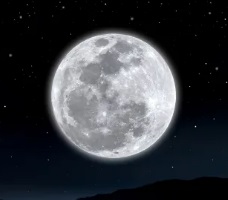Purnima
Purnima (often written Poornima) is a Sanskrit word that means “full moon.” It refers to the phase of the Moon that is brightest and fully lit. The 15th tithi of the lunar fortnight’s brilliant half, also known as the waxing phase or Shukla paksh, is Purnima. In the purnimanta system of the Hindu lunar calendar, the end of the Purnima tithi signifies the beginning of the 15-day Krishna paksha (waning) phase of the Moon and the start of the new month (with Pradipada tithi).
How many Purnima in a year?
Twelve Purnima days are there annually, each carrying its unique significance. Among most of the Hindus, Purnima carries spiritual importance as a dedicated day for fasting and worship. The back-to-back 12 Purnimas are observed by the Hindus every year and these are Pausa Purnima, Magha Purnima, Phalguna Purnima, Chaitra Purnima, Vaishakha Purnima(Budha Purnima), Jyestha Purnima, Ashadha Purnima(Guru Purnima), Sravana Purnima, Bhadrapada Purnima, Ashvina Purnima, Kartika Purnima, Agrahayana Purnima.
Purnima is the most auspicious day for meditation and manifestation. Click the link and collect the best course on Meditation techniques. The Infinite Subconscious Mind Course
Importance of Purnima
In Hinduism, Purnima is highly observed as an auspicious day of great significance. Hindu custom dictates that on Purnima, the day of the full moon, people observe a fast known as the Satyanarayan fast. On this day, devotees organise a Satyanarayan puja, which is led by a priest. On the day of the full moon, fasting is thought to have many beneficial impacts on the body, mind, and spirit. Keeping a fast on this specific day is beneficial for mental health maintenance. On this auspicious day, people worship the Lord Vishnu and the full moon. Fasting on this day has many advantages, such as improved endurance, acid content regulation, metabolic balancing, and digestive system purification. Astrology suggests that people who are depressed and anxious fast on the day of the full moon and give water to the moon. It is thought that performing the Purnima day puja bestows great rewards on the participants. The spiritual significance of Purnima days is increased by the belief that many spiritual masters, such as Buddha and Guru Nanak, were born on these days.
Paush Purnima 2024
The Hindu festival of Paush Purnima, which falls in December or January on the Gregorian calendar, is celebrated on the full moon day (purnima tithi) of the month of Paush. In this year it will be held from 24th of January(9.50 pm) to the 25th of January(11.24 pm). The holy Yamuna and Ganga rivers are the site of ritual bathing by devotees, and pilgrims are drawn to Prayag Sangam (the confluence of the Saraswati, Yamuna, and Ganga) for a sacred plunge that is said to atone for sins and bestow “moksha,” or salvation. In addition to Prayag, major pilgrimage destinations like Nasik, Allahabad, and Ujjain are also bustling with devotionals celebrating Paush Purnima. Across the nation, Hindu temples hold special ceremonies on this day, which is also known as “Shakambari Jayanti” in some areas. Goddess Shakambari, a manifestation of Goddess Durga, is deeply revered on this day. Paush Purnima falls on the same day as the nine-day Shakambari Navratri celebration ends. This day is marked in Chhattisgarh with the ‘Charta’ festival, an important harvest celebration that tribal groups commemorate with great enthusiasm and intensity. In India, Paush Purnima is observed as a day full of varied festivities, pilgrimages, and spiritual importance.
Rituals to follow
- The ceremonial bath is the main custom performed on the auspicious day of Paush Purnima. During sunrise, devotees wash in the holy rivers, offer ‘argya’ to the rising sun, and partake in other religious rituals.
- After taking the customary bath, worshippers use water to honour the “Shiv lingam” and spend time at the holy location engaging in spiritual exercises (sadhna).
- Devotees honour Lord Vishnu by observing the “Satyanarayana” vratam on Paush Purnima. The observation of the ‘Satyanarayana’ katha and fasting are essential components. After preparing and offering a special prasad to the deity, everyone in attendance receives the prasadam, which is then followed by a “aarti.” This day is marked by a unique ‘Pushyabhishek Yatra’ observed by Lord Krishna temples all around the country, along with Ramayana and Bhagwad Gita lectures.
- Performing acts of charity on Paush Purnima is seen as extremely fortunate. Giving on this day is thought to have quick results. In ‘anna daan,’ temples and ashrams provide free meals to the underprivileged as a kind of altruism.
- Meditation and Yoga: To access the spiritual energy enhanced by the full moon, immerse yourself in deep meditation and yoga practices.
- Chanting and prayer: Recite holy mantras, especially those honouring Goddess Lakshmi (Om Mahalakshmaye Namaha) and Lord Vishnu (Om Namo Bhagavate Vasudevaya).
- Moon gazing: Many people find great meaning and simplicity in the simple yet profound ritual of merely admiring the beauty of the full moon, which helps them to feel at peace.
- Purnima is the most auspicious day for meditation and manifestation. Click the link and collect the best course on Meditation techniques. The Infinite Subconscious Mind Course
- Transformative Meditation: Click the supplied link to vedicastro.in where transformative guided meditation is provided, which is led by Manoj Vanj. As a committed peace activist and humanitarian, Sri Vanj is a visionary who uses yoga, meditation, and life-changing breathing techniques to impart profound insight that helps people and the world at large.

Conclusion
For Hindu devotees, Paush Purnima has great religious significance. This day is important since it’s the end of winter and the start of the ceremonial bathing month of ‘Magh.’ Furthermore, Paush Purnima is especially significant because it falls during the ‘Maha Kumbh Mela’ time. Hindus hold that on this auspicious day, they might fulfil their deepest desires and purify themselves of all sins by taking part in the holy Paush Purnima Snan. These baths are taken by devotees at important Hindu pilgrimage destinations. The arrival of Paush Purnima also means the start of the ceremonial Magh Snan. This holy day is observed by many as a chance to purge their spirits and chase away inner darkness.

